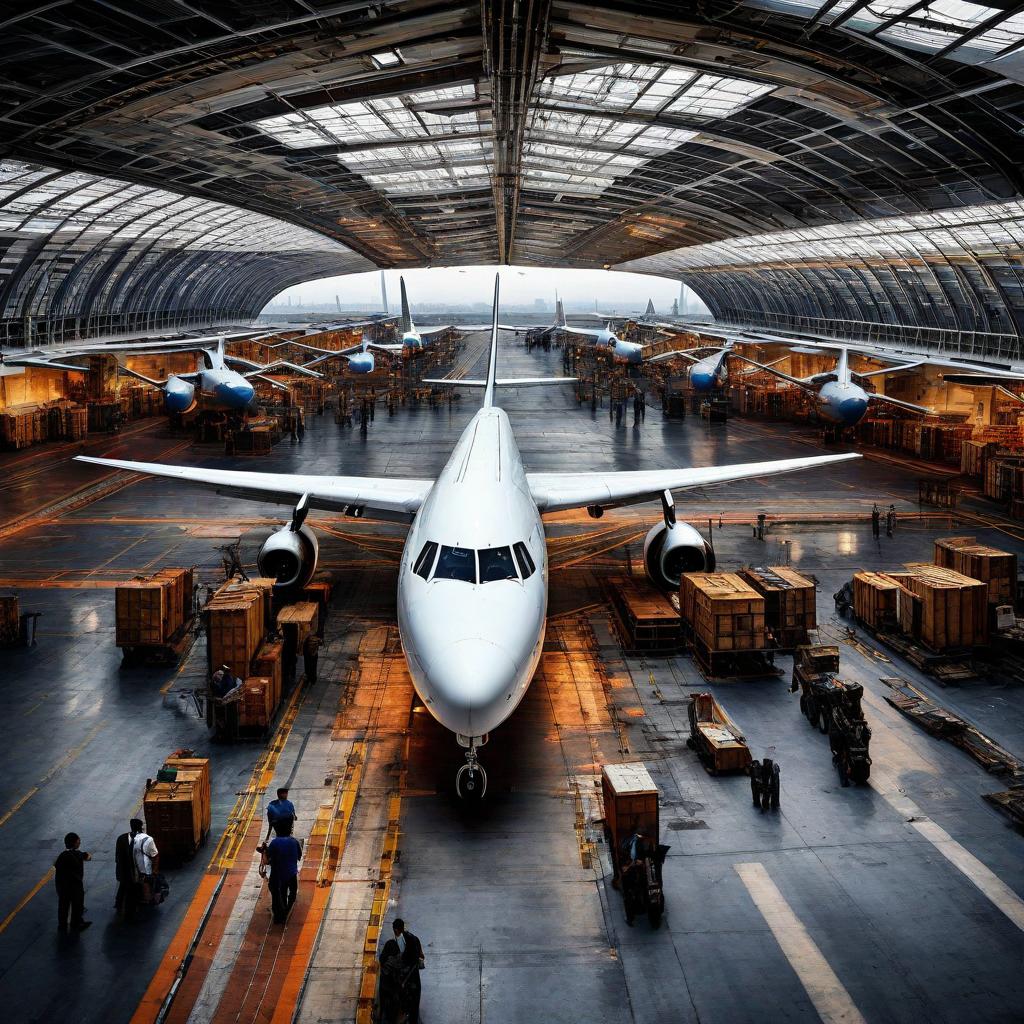India’s Soaring Aviation Sector: A Dive into Growth and Challenges
India stands as the world’s fastest-growing aviation market, with limitless possibilities for expansion. Union Minister for Civil Aviation, Jyotiraditya Scindia, envisions transforming the country into a global aviation hub, and the government is actively working to meet the necessary requirements. The Indira Gandhi International Airport in Delhi serves as the primary civilian aviation hub, leading the way in passenger and international traffic since 2009.
Taking Flight: A Comprehensive Look at the Aviation Industry
The aviation industry significantly influences the Indian economy, contributing to GDP, employment generation, tourism promotion, trade facilitation, cargo transportation, investment attraction, improved connectivity, and overall economic growth. Despite its sensitivity to economic fluctuations and external factors, India’s civil aviation is poised to be a major catalyst in achieving a USD 5 trillion economy by 2026, making it the world’s civil market.
As of March 2023, domestic carriers, including Air India, IndiGo Airlines, SpiceJet, GoAir, AirAsia India, Vistara, and Alliance Air, have seen substantial growth, flying 13 million passengers in March alone. The Civil Aviation Ministry predicts over 140 million passengers in FY 2024, and India aims to handle more than 1.3 billion passengers annually in the next two decades. IndiGo currently leads the market with a 56.8% share, followed by Vistara (8.9%) and Air India (8.8%).
However, challenges such as grounded aircraft, maintenance issues, supply chain challenges, and environmental concerns pose hurdles to the industry’s growth. The shortage of skilled personnel, including pilots, engineers, and cabin crew, adds to operational disruptions. Despite setbacks from the COVID-19 pandemic, the industry’s long-term outlook remains positive, contingent on regulatory policies, economic stability, and adaptability to changing conditions.
Government Flight Plan: Navigating the Path to an Aviation Hub
The Union Government’s Regional Connectivity Scheme UDAN aims to enhance aviation infrastructure and air connectivity in tier 2 and tier 3 cities. The goal is to develop 100 airports by 2024, fostering collaboration between airlines and airports. The government emphasizes the use of digital technologies, e-governance, and continues efforts to boost air connectivity. The push for indigenously developing drone technology and establishing greenfield airports showcases India’s commitment to becoming a global hub for research, development, testing, manufacturing, operation, and export of drones.

Hub Airports: Connecting India to the World
India boasts several airport hubs, including Indira Gandhi International Airport, Chhatrapati Shivaji Maharaj International Airport, Kempegowda International Airport, Chennai International Airport, and Netaji Subhas Chandra Bose International Airport. These hubs play a crucial role in connecting regions globally, contributing to economic development, tourism, and trade.
Future of Aviation Hub in India
India envisions becoming the leading global aviation hub by 2040, focusing on autonomous aircraft, AI, AR, blockchain, 3D printing, electric and hybrid aircraft, biometrics, virtual and augmented reality training, contactless technology, predictive maintenance, in-flight connectivity, cloud computing, advanced materials, and next-gen air traffic control. The plan includes expanding the number of operating airports from 131 in 2022 to 220 by 2025.
Public-private partnerships at Delhi, Hyderabad, and Bengaluru airports are driving projects worth INR 30,000 crores by 2023. The industry’s future holds promise with continued growth, increased tourism, and government support, though challenges like infrastructure constraints and competition from low-cost carriers persist. India’s aviation landscape is evolving rapidly, setting the stage for it to become a prominent global transit hub.
In summary, India’s aviation industry is on an upward trajectory, with concerted efforts towards growth, innovation, and becoming a global aviation powerhouse by 2040.
For more interesting blogs click https://vichaardhara.co.in/index.php/category/uncategorised/


